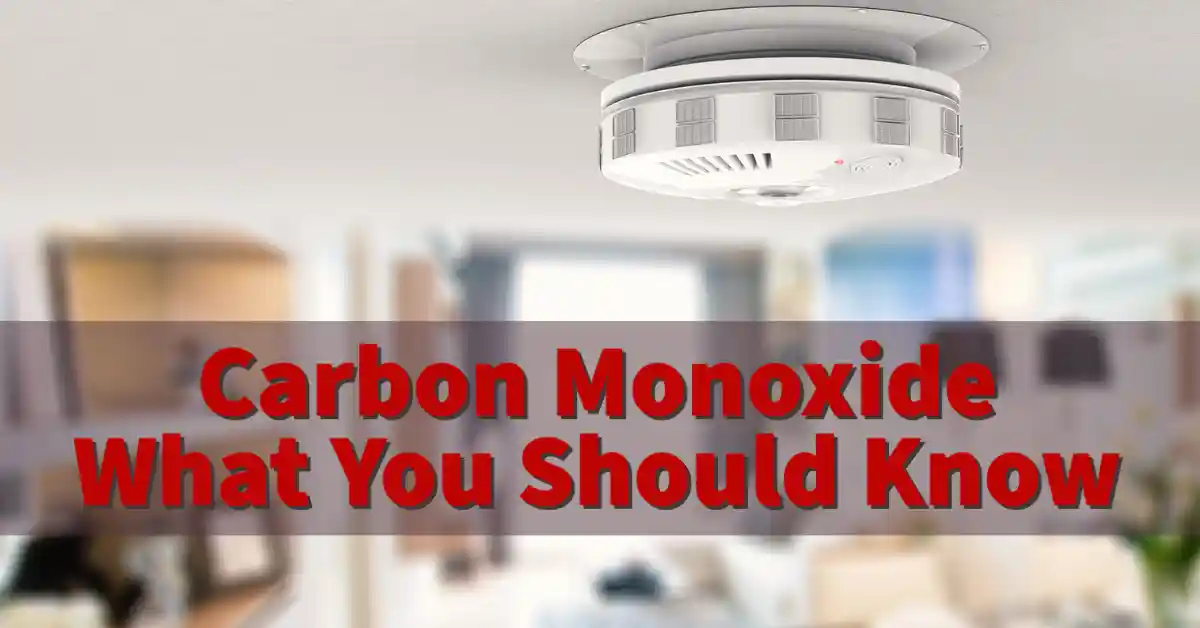Author: Jeff O'Hara
Keeping your family warm should not end in tragedy. Still, every winter, we hear about families succumbing to carbon monoxide poisoning caused by a faulty space heater or a stove being used for heat. According to studies by Consumer Reports, carbon monoxide poisoning is responsible for 50,000 emergency room visits and around 1,200 deaths every year in the US. Most of these illnesses and deaths occur during the winter months and are most commonly the result of a poorly running heating system in the home.
As we approach the end of another Houston summer, many of us will be using our furnaces and heat pumps for the first time in several months. Air conditioning systems do not produce carbon monoxide as their function does not require the burning of fuel, making CO poisoning highly unlikely during the summer months. Before firing up the furnace this fall, give this blog a quick read and make yourself aware of the signs and symptoms of carbon monoxide poisoning.
What is Carbon Monoxide, and Why is it Dangerous?
Carbon monoxide (CO) is a colorless, odorless gas that is a by-product of burning several different fuels. Gasoline, propane, charcoal, and natural gas all emit CO as a part of their respective heating processes. CO will be part of the result any time a fossil fuel is burned for energy, whether in a car or boat engine, a furnace, or an outdoor grill. When carbon monoxide is inhaled, it forces oxygen out of red blood cells, replacing it with the heavier CO, causing tissue damage to the cells, eventually leading to death.
What Appliances Can Cause a CO Leak?
Any appliances that burn fuel can become a source of a dangerous CO leak; gas clothes dryers, water heaters, furnaces, fireplaces, gas ranges, and wood stoves are the most common indoor sources of carbon monoxide. Do not use a charcoal grill in your garage, as smoke and CO from the fire will get into your attic, and the AC system, and your lungs. Get into the habit of closing your garage door only AFTER you’ve turned the car off to prevent the build-up of deadly CO in the garage, eventually seeping into the house.
How Will I Know I Have a Carbon Monoxide Leak?
Since carbon monoxide is colorless, odorless, and tasteless, a person can’t detect CO in the same way you would a natural gas or water leak. Unless you have a carbon monoxide detector in your home, the first indication you may get is the symptoms that come with CO poisoning. The most common physical signs of CO poisoning include difficulty breathing, dizziness, drowsiness, confusion, and unconsciousness.
Minor CO leaks can exist for months before we become aware of them, and many of the early physical symptoms of CO poisoning mimic other illnesses. If you or anyone in your family notices that they “feel better” when spending time away from home, or if your pets seem as sluggish as you are in the house, CO poisoning is something to consider. You may mistake the early symptoms of CO poisoning as the start of a cold, but when a fever or swollen lymph glands don’t accompany symptoms, your doctor may recommend testing your blood for CO.
What to Do if You Suspect a Carbon Monoxide Leak?
If you or anyone in your household has been exposed to CO and begins experiencing the symptoms of CO poisoning, get everyone out of the house immediately. Call 9-1-1 if the issue is severe; most fire departments will be able to turn off gas service to any appliances that may be leaking. Firefighters will also have the appropriate breathing apparatus to enter your home safely and begin the ventilation process.
The next step in eliminating the CO leak in your home is to determine what appliance is responsible. Once the house has been ventilated, gas or other fuel sources can be restored, and appliances can be brought back online. Using a hand-held CO detector, we can determine the source of the leak, and proper repairs can begin.
How Can I Prevent Carbon Monoxide Poisoning in My Home?
Carbon monoxide detectors are the best “first line” of defense against the dangers of carbon monoxide poisoning. Just a quick Google search of “co detectors” revealed several models, all under $40, that either plug into an available wall outlet or can be hardwired into your home’s security system. Installing one of these devices close to your furnace, gas range, water heaters, or fireplace will give you and your family peace of mind and early warning protection from CO leaks.
Think you might have a carbon monoxide leak in your home? The experts at Nick’s Air Conditioning can inspect your heating systems, gas lines, and gas appliances for signs of wear and tear and test for and detect any leaks that are present. Natural gas and CO leaks are hazardous, and their repair is something best left to a qualified professional.
Call Nick’s TODAY; We’re on the Way!
Want to know more about the dangers of carbon monoxide and what you can do to avoid it?
The following articles were helpful in researching this blog.
https://www.health.state.mn.us/communities/environment/air/toxins/index.html
https://www.mayoclinic.org/diseases-conditions/carbon-monoxide/symptoms-causes/syc-20370642


